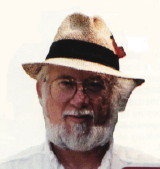Stephen Glass was a young writer at the
New Republic who had a reputation for always getting the best scoops. In his most celebrated article, "Hack Heaven," he told the story of a fifteen-year-old hacker who broke into the computer system of a software corporation, Jukt Micronics, and then succeeded in extorting money, a job, a Miata, a trip to Disney World, and a lifetime subscription to
Playboy from the company. But Jukt Micronics, as well as many of the other topics Glass wrote about, existed only in his own imagination. The
New Republic fired him in May 1998 when it found out.
More…

 In 1960, twenty-year-old Dan Rattiner started a small paper during his summer vacation in the Hamptons. He gave copies of it away for free, making money from the advertisements. It was the first free paper in the United States. Gradually Dan started more papers, each of them serving a different community in the Hamptons. He called all of them collectively Dan's Papers, and they soon became the most widely read papers in the Hamptons. Dan wrote most of the content himself, but from the start he approached the task with a sense of humor. Many of the stories were humorous hoaxes, which earned him the nickname the "Hoaxer of the Hamptons."
More…
In 1960, twenty-year-old Dan Rattiner started a small paper during his summer vacation in the Hamptons. He gave copies of it away for free, making money from the advertisements. It was the first free paper in the United States. Gradually Dan started more papers, each of them serving a different community in the Hamptons. He called all of them collectively Dan's Papers, and they soon became the most widely read papers in the Hamptons. Dan wrote most of the content himself, but from the start he approached the task with a sense of humor. Many of the stories were humorous hoaxes, which earned him the nickname the "Hoaxer of the Hamptons."
More…
Hoaxes by Journalists